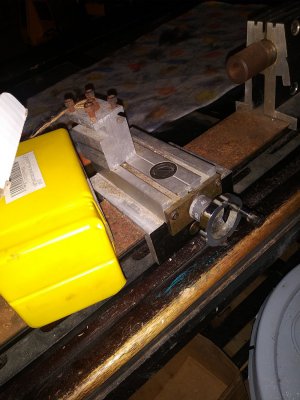Ha, just returned from a local metal shop that lets one pick over their drops, came back with some aluminum for tool making. Gonna make a fence for my rotary table that squares up on the t-slot, I think aluminum will work fine for that. Also need to make a two-point clamp to hold down a sandwich of sacrificial aluminum and 0.02" brass sheet to mill some small model locomotive parts, wonder if a 3/8" aluminum bar is beefy enough to not flex so much over the part... ??\
To the OP's question, brass is used a fair bit in scale modeling of railroad locomotives. Fabrication of the major structures like frames and boilers is from brass sheet. A lot of "decorative" parts like air compressors are available as brass castings. Just about any literature on the subject involves the use of brass.
I'm scratchbuilding my first locomotive, a HOn3 model. I started doing it in brass, but at the time the investment in a machine shop wasn't in the cards. Turned to 3D resin printing, works really well for the decorative parts. To make it run, however, it needs some weight, and mechanisms are just easier in metal so I'm now Sherline-equipped and doing a solid brass frame and teeny parts for the rods and valve gear from brass sheet. I may move some of that over to bronze or nickel sliver for a bit of hardness, but I'm learning machining now and having a metal that cuts like butter is handy...
In the same vein, I'm currently focusing on aluminum solutions for my tooling. At some point that'll break down, e.g., maybe the clamp I mentioned earlier.
Feedback appreciated.

